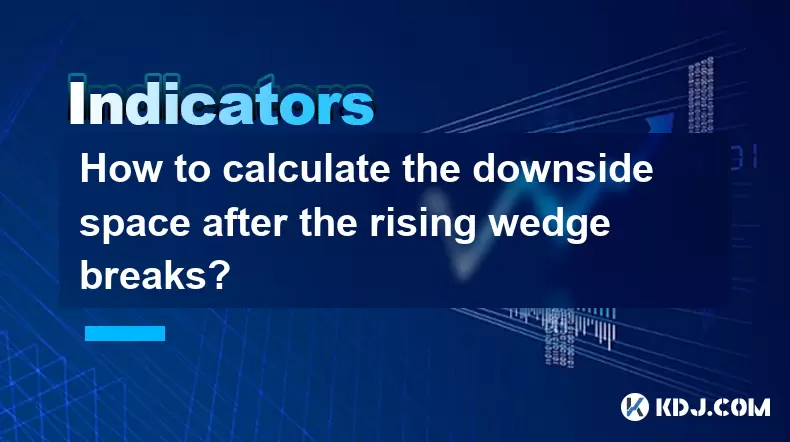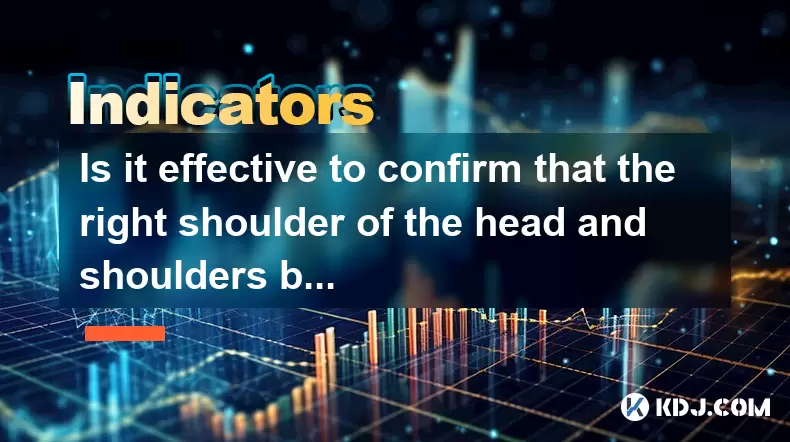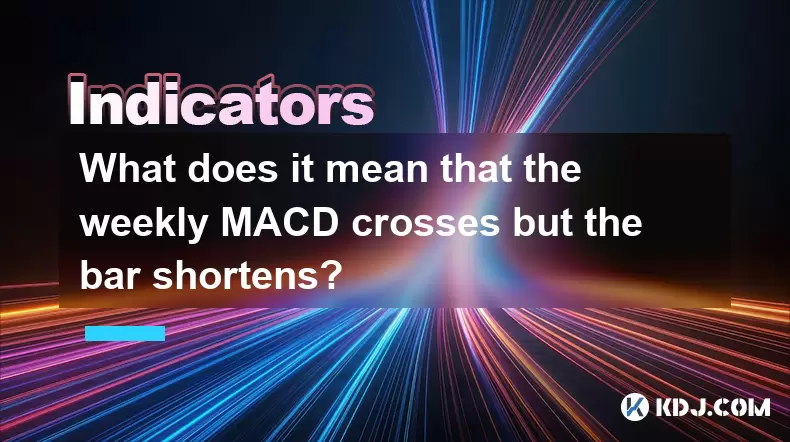-
 Bitcoin
Bitcoin $106,754.6083
1.33% -
 Ethereum
Ethereum $2,625.8249
3.80% -
 Tether USDt
Tether USDt $1.0001
-0.03% -
 XRP
XRP $2.1891
1.67% -
 BNB
BNB $654.5220
0.66% -
 Solana
Solana $156.9428
7.28% -
 USDC
USDC $0.9998
0.00% -
 Dogecoin
Dogecoin $0.1780
1.14% -
 TRON
TRON $0.2706
-0.16% -
 Cardano
Cardano $0.6470
2.77% -
 Hyperliquid
Hyperliquid $44.6467
10.24% -
 Sui
Sui $3.1128
3.86% -
 Bitcoin Cash
Bitcoin Cash $455.7646
3.00% -
 Chainlink
Chainlink $13.6858
4.08% -
 UNUS SED LEO
UNUS SED LEO $9.2682
0.21% -
 Avalanche
Avalanche $19.7433
3.79% -
 Stellar
Stellar $0.2616
1.64% -
 Toncoin
Toncoin $3.0222
2.19% -
 Shiba Inu
Shiba Inu $0.0...01220
1.49% -
 Hedera
Hedera $0.1580
2.75% -
 Litecoin
Litecoin $87.4964
2.29% -
 Polkadot
Polkadot $3.8958
3.05% -
 Ethena USDe
Ethena USDe $1.0000
-0.04% -
 Monero
Monero $317.2263
0.26% -
 Bitget Token
Bitget Token $4.5985
1.68% -
 Dai
Dai $0.9999
0.00% -
 Pepe
Pepe $0.0...01140
2.44% -
 Uniswap
Uniswap $7.6065
5.29% -
 Pi
Pi $0.6042
-2.00% -
 Aave
Aave $289.6343
6.02%
How to calculate the downside space after the rising wedge breaks?
The rising wedge pattern signals a potential bearish reversal, with breakdowns often leading to measured downside targets based on the wedge's height.
Jun 17, 2025 at 09:28 am

Understanding the Rising Wedge Pattern
The rising wedge pattern is a technical analysis formation that typically signals a potential reversal from an uptrend to a downtrend. It is characterized by two converging trendlines: one drawn along higher lows and another connecting higher highs, both sloping upwards but narrowing over time. As the price action compresses within this tightening range, traders anticipate a breakout, either to the upside or downside. However, in most cases, especially when appearing at the end of a prolonged rally, the breakdown is more common than a breakout.
This pattern is often seen as a bearish signal because the rising support line loses strength as buyers become less aggressive. When the price finally breaks below the lower trendline, it confirms the pattern and suggests a likely continuation of the downward move.
Identifying the Breakdown Point
A valid breakdown occurs when the price closes below the lower trendline of the rising wedge with significant volume. Traders should not rely solely on intraday moves or false breakouts; instead, they should wait for a clear and decisive close outside the pattern boundary. This confirmation helps avoid premature entries based on noise or short-term volatility.
To increase accuracy, traders often use candlestick patterns such as bearish engulfing candles or dark cloud cover formations near the breakout point. These additional signals can help confirm the validity of the breakdown and improve trade timing. Some traders also look for momentum divergence on indicators like the Relative Strength Index (RSI) or Moving Average Convergence Divergence (MACD) to further validate the weakening of the uptrend.
Determining the Target Downside Measurement
Once the breakdown is confirmed, the next step is to estimate the potential downside move. The general rule for measuring the projected price move after a rising wedge breakdown is to take the height of the wedge at its widest point and project that distance downwards from the breakout level.
- Measure the vertical distance between the upper and lower trendlines at the start of the wedge
- Subtract that value from the breakout price level
For example, if the wedge begins at $100 and ends at the breakout point of $120 with a height of $20, then the target downside would be $120 - $20 = $100. This provides a baseline expectation for how far the price may fall following the breakdown.
It's important to note that this measurement is not a guarantee but rather a guide. Price may reach the target quickly or retrace before continuing down. Therefore, using this projection alongside other tools like Fibonacci extensions or prior support/resistance levels can enhance accuracy.
Using Support Levels for Realistic Targets
While the measured move gives a theoretical downside, real-world price behavior is influenced by historical support zones. Before relying entirely on the wedge’s projected move, traders should analyze the chart for nearby support areas where the price might stall or reverse.
These supports could include:
- Previous swing lows
- Horizontal consolidation zones
- Trendline supports
- Fibonacci retracement levels
By comparing the measured move projection with these structural supports, traders can determine whether the full target is realistic or if the price might find support earlier. If the measured move falls into an area with strong historical support, it makes sense to expect a pause or bounce there.
Conversely, if no major support exists near the projected target, the price could extend beyond it, especially in volatile markets or during strong selling pressure.
Setting Stop Loss and Managing Risk
Risk management is crucial when trading breakdowns from patterns like the rising wedge. Since false breakouts are common, especially in cryptocurrency markets known for their high volatility, placing a stop loss above the wedge’s upper boundary helps protect against unexpected reversals.
- Place the stop loss just above the highest point of the wedge
- Use a trailing stop once the price moves in your favor
- Calculate position size based on the difference between entry and stop loss levels
Traders should also monitor volume during the breakdown phase. A strong surge in volume increases the probability that the breakdown is genuine. Conversely, low volume could indicate a lack of conviction among sellers, suggesting the move may not sustain.
Additionally, using tools like the Average True Range (ATR) can help adjust stop loss levels dynamically based on current market volatility, ensuring better risk control.
Incorporating Other Indicators for Confirmation
While the rising wedge itself offers valuable insights, combining it with other technical indicators enhances reliability. Oscillators like the RSI or MACD can provide early warnings about weakening momentum even before the breakdown occurs.
- RSI forming lower highs while price forms higher highs indicates hidden bearish divergence
- MACD line crossing below the signal line shortly after the breakdown confirms bearish momentum
Moving averages can also act as dynamic resistance post-breakdown. For instance, the 50-period or 200-period moving average might align with the projected target zone, reinforcing the likelihood of continued downside.
Moreover, monitoring order flow through tools like volume-by-price or footprint charts can reveal large sell orders absorbed near key levels, offering insight into institutional participation and strengthening confidence in the trade setup.
Frequently Asked Questions
Q: Can a rising wedge appear in a downtrend?
Yes, although less commonly, a rising wedge can form during a downtrend as a continuation pattern. In this scenario, the breakdown typically leads to further downside rather than a reversal.
Q: How long does a rising wedge pattern usually last?
The duration varies depending on the timeframe. On daily charts, it often spans several weeks, while on hourly charts, it may form within days. The longer the pattern develops, the more significant the potential move upon breakdown.
Q: Should I enter immediately after the breakdown or wait for a retest?
Some traders prefer immediate entry after a confirmed breakdown, while others wait for a retest of the broken support as new resistance. Both approaches have merit, depending on risk tolerance and strategy preference.
Q: What cryptocurrencies are more prone to rising wedge patterns?
Highly volatile assets like Bitcoin, Ethereum, and altcoins with strong trending behaviors tend to exhibit rising wedges more frequently due to their pronounced swings and emotional trading dynamics.
Disclaimer:info@kdj.com
The information provided is not trading advice. kdj.com does not assume any responsibility for any investments made based on the information provided in this article. Cryptocurrencies are highly volatile and it is highly recommended that you invest with caution after thorough research!
If you believe that the content used on this website infringes your copyright, please contact us immediately (info@kdj.com) and we will delete it promptly.
- 2025-W Uncirculated American Gold Eagle and Dr. Vera Rubin Quarter Mark New Products
- 2025-06-13 06:25:13
- Ruvi AI (RVU) Leverages Blockchain and Artificial Intelligence to Disrupt Marketing, Entertainment, and Finance
- 2025-06-13 07:05:12
- H100 Group AB Raises 101 Million SEK (Approximately $10.6 Million) to Bolster Bitcoin Reserves
- 2025-06-13 06:25:13
- Galaxy Digital CEO Mike Novogratz Says Bitcoin Will Replace Gold and Go to $1,000,000
- 2025-06-13 06:45:13
- Trust Wallet Token (TWT) Price Drops 5.7% as RWA Integration Plans Ignite Excitement
- 2025-06-13 06:45:13
- Ethereum (ETH) Is in the Second Phase of a Three-Stage Market Cycle
- 2025-06-13 07:25:13
Related knowledge

How to interpret the low opening the next day after the long lower shadow hits the bottom?
Jun 18,2025 at 12:22am
Understanding the Long Lower Shadow Candlestick PatternIn technical analysis, a long lower shadow candlestick is often seen as a potential reversal signal in a downtrend. This pattern occurs when the price opens, trades significantly lower during the session, but then recovers to close near the opening price or slightly above. The long wick at the botto...

How to operate the RSI indicator repeatedly in the 40-60 range?
Jun 18,2025 at 12:56am
Understanding the RSI Indicator and Its RelevanceThe Relative Strength Index (RSI) is a momentum oscillator widely used in cryptocurrency trading to measure the speed and change of price movements. Typically, the RSI ranges from 0 to 100, with levels above 70 considered overbought and below 30 considered oversold. However, when the RSI repeatedly stays ...

How strong is the MACD golden cross below the zero axis?
Jun 17,2025 at 11:00pm
Understanding the MACD Indicator in Cryptocurrency TradingThe Moving Average Convergence Divergence (MACD) is one of the most widely used technical indicators among cryptocurrency traders. It helps identify potential trend reversals, momentum shifts, and entry or exit points. The MACD consists of three main components: the MACD line, the signal line, an...

How effective is the golden cross of the William indicator double line in the oversold area?
Jun 17,2025 at 11:56pm
Understanding the William Indicator and Its Double Line SetupThe William %R (Williams Percent Range) is a momentum oscillator used to identify overbought or oversold conditions in a market. It ranges from 0 to -100, with readings above -20 considered overbought and below -80 deemed oversold. The double line setup refers to plotting two different timefra...

Is it effective to confirm that the right shoulder of the head and shoulders bottom volume at the 30-minute level is enlarged?
Jun 17,2025 at 11:42pm
Understanding the Head and Shoulders Pattern in Cryptocurrency TradingThe head and shoulders pattern is one of the most recognized reversal patterns in technical analysis, especially within cryptocurrency trading. It typically signals a potential shift from a bullish trend to a bearish one. This pattern consists of three peaks: the left shoulder, the he...

What does it mean that the weekly MACD crosses but the bar shortens?
Jun 18,2025 at 01:07am
Understanding the MACD IndicatorThe Moving Average Convergence Divergence (MACD) is a popular technical analysis tool used in cryptocurrency trading to identify potential trend reversals and momentum shifts. It consists of three main components: the MACD line, the signal line, and the histogram (also known as the bar). The MACD line is calculated by sub...

How to interpret the low opening the next day after the long lower shadow hits the bottom?
Jun 18,2025 at 12:22am
Understanding the Long Lower Shadow Candlestick PatternIn technical analysis, a long lower shadow candlestick is often seen as a potential reversal signal in a downtrend. This pattern occurs when the price opens, trades significantly lower during the session, but then recovers to close near the opening price or slightly above. The long wick at the botto...

How to operate the RSI indicator repeatedly in the 40-60 range?
Jun 18,2025 at 12:56am
Understanding the RSI Indicator and Its RelevanceThe Relative Strength Index (RSI) is a momentum oscillator widely used in cryptocurrency trading to measure the speed and change of price movements. Typically, the RSI ranges from 0 to 100, with levels above 70 considered overbought and below 30 considered oversold. However, when the RSI repeatedly stays ...

How strong is the MACD golden cross below the zero axis?
Jun 17,2025 at 11:00pm
Understanding the MACD Indicator in Cryptocurrency TradingThe Moving Average Convergence Divergence (MACD) is one of the most widely used technical indicators among cryptocurrency traders. It helps identify potential trend reversals, momentum shifts, and entry or exit points. The MACD consists of three main components: the MACD line, the signal line, an...

How effective is the golden cross of the William indicator double line in the oversold area?
Jun 17,2025 at 11:56pm
Understanding the William Indicator and Its Double Line SetupThe William %R (Williams Percent Range) is a momentum oscillator used to identify overbought or oversold conditions in a market. It ranges from 0 to -100, with readings above -20 considered overbought and below -80 deemed oversold. The double line setup refers to plotting two different timefra...

Is it effective to confirm that the right shoulder of the head and shoulders bottom volume at the 30-minute level is enlarged?
Jun 17,2025 at 11:42pm
Understanding the Head and Shoulders Pattern in Cryptocurrency TradingThe head and shoulders pattern is one of the most recognized reversal patterns in technical analysis, especially within cryptocurrency trading. It typically signals a potential shift from a bullish trend to a bearish one. This pattern consists of three peaks: the left shoulder, the he...

What does it mean that the weekly MACD crosses but the bar shortens?
Jun 18,2025 at 01:07am
Understanding the MACD IndicatorThe Moving Average Convergence Divergence (MACD) is a popular technical analysis tool used in cryptocurrency trading to identify potential trend reversals and momentum shifts. It consists of three main components: the MACD line, the signal line, and the histogram (also known as the bar). The MACD line is calculated by sub...
See all articles

























































































